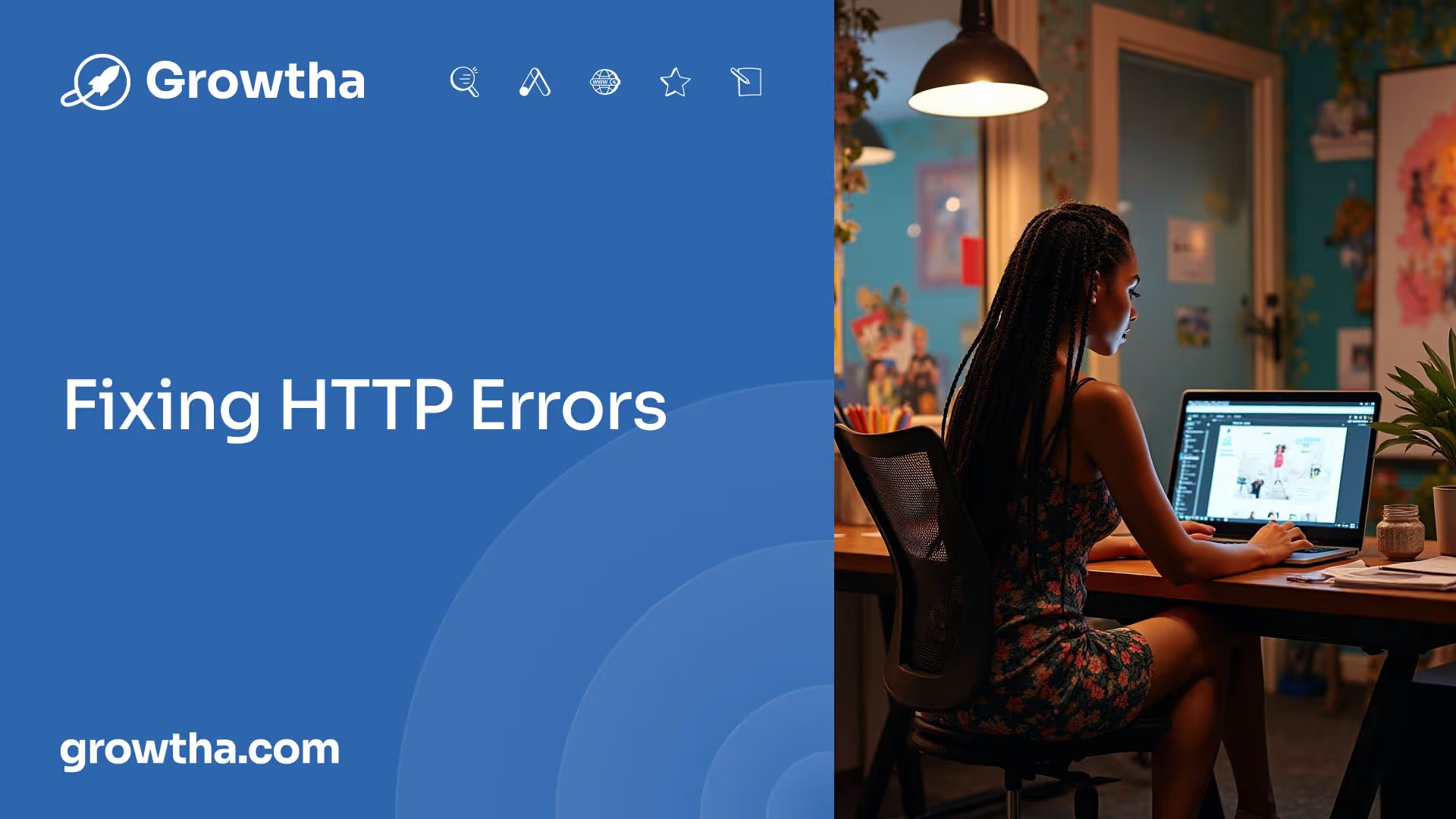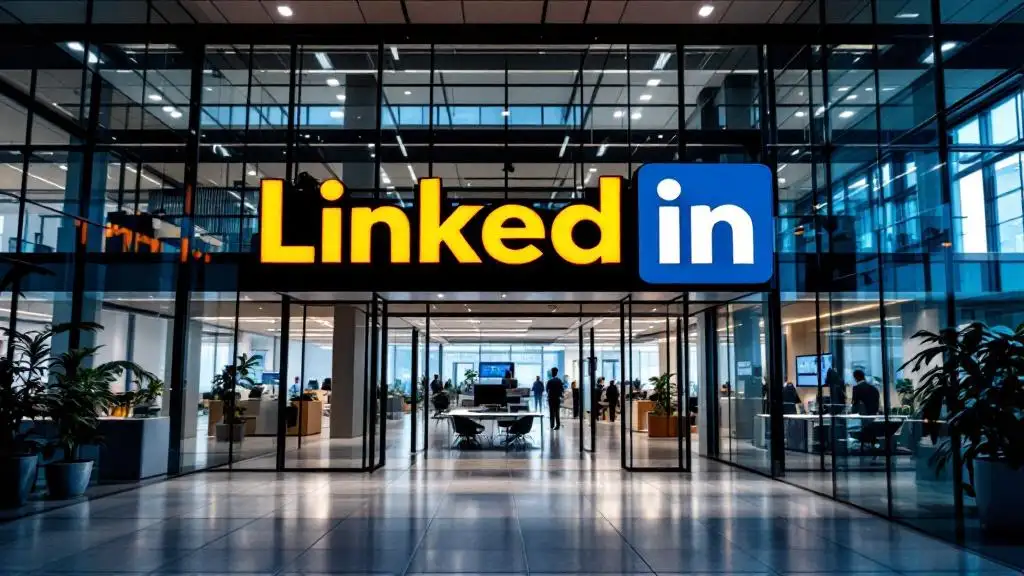Is Your Website Traffic Down? Its Not Your Fault!
Understanding common HTTP errors and knowing how to fix them is crucial for maintaining a smooth user experience.


Is Your Website Traffic Down? Its Not Your Fault!
Understanding Website Errors

When it comes to website traffic, encountering errors can be a frustrating experience for both website owners and visitors. Understanding common HTTP errors and knowing how to fix them is crucial for maintaining a smooth user experience.
Common HTTP Errors
HTTP errors are status codes that indicate a problem with accessing a particular web page. Some of the most common HTTP errors include:

These errors can often be fixed by taking appropriate actions such as reviewing URLs, updating user account access, submitting broken link redirects, refreshing the browser, deleting cookies, optimizing databases, or contacting hosting companies [1].
Fixing HTTP Errors

To address and resolve HTTP errors, it is important to diagnose the root cause of the problem. Here are some general steps to fix these errors:
- Review URLs: Check for any typos or incorrect URLs that may be causing the error. Correcting these issues can help ensure the proper functioning of the website.
- Update User Account Access: Verify that user accounts have the necessary permissions to access the requested resources. Adjusting user account settings or granting appropriate access can help resolve authorization-related errors.
- Submit Broken Link Redirects: If a broken link is causing a 404 error, consider submitting a redirect to guide users to the correct page. This can help maintain a seamless user experience and prevent frustration.
- Refresh the Browser: Sometimes, an error may be temporary or caused by a browser cache issue. Refreshing the browser or clearing the cache can help resolve certain errors.
- Optimize Databases: If errors persist, it is worth optimizing databases to ensure efficient data retrieval and storage. Optimizing databases can help improve website performance and reduce the likelihood of encountering errors.
- Contact Hosting Companies: If the error is related to server issues or server-side configurations, it may be necessary to contact the hosting company for assistance. They can provide insights and support in resolving server-related errors.
By addressing these common HTTP errors promptly and effectively, website owners can ensure a smoother user experience and minimize the impact on website traffic. Regular monitoring and maintenance play crucial roles in preventing these errors from occurring in the first place.
Enhancing SEO Elements

To improve your website's visibility and attract more traffic, it's crucial to enhance the SEO elements on your pages. By optimizing page titles, utilizing meta descriptions effectively, and paying attention to ALT text, you can significantly improve your website's search engine rankings.
Optimizing Page Titles
Page titles play a vital role in SEO and can greatly impact your website's visibility in search engine results. It's important to craft concise and compelling titles that accurately describe the content of the page. According to Umami Marketing, page titles should not exceed 70 characters to avoid being cut off by search engines and web browsers.
When optimizing page titles, it's essential to incorporate relevant keywords that reflect the content of the page. By using targeted keywords, you increase the chances of your website appearing in relevant search queries. However, it's important to strike a balance and avoid keyword stuffing, as search engines prioritize quality and relevance.
Utilizing Meta Descriptions
Meta descriptions are brief summaries that appear below the page title in search engine results. They provide users with a preview of what they can expect to find on your webpage. By crafting compelling meta descriptions, you can entice users to click through to your website.
Similar to page titles, meta descriptions should be concise and descriptive. It's recommended to keep them within 155 characters to ensure they are not cut off in search engine results [1]. Incorporate relevant keywords naturally within the meta description to attract the attention of both search engines and users. A well-crafted meta description can significantly improve click-through rates and drive more traffic to your website.
Importance of ALT Text
ALT text, or alternative text, is used to describe images on your website. It plays a crucial role in SEO because search engines cannot interpret images as humans do. By adding keyword-rich and descriptive ALT text to your images, you make them more accessible to search engine crawlers and improve your website's optimization.
Missing ALT text on images can hinder search engine processing. It's important to add descriptive and keyword-rich titles to images in WordPress or other content management systems to optimize them effectively. When crafting ALT text, ensure that it accurately describes the image and includes relevant keywords. However, it's important to avoid keyword stuffing and keep the ALT text natural and informative.
By enhancing these SEO elements on your website, you can improve its visibility in search engine results and attract more organic traffic. Remember to optimize page titles with relevant keywords, utilize compelling meta descriptions, and provide descriptive ALT text for your images. These optimizations will help search engines understand your content better and increase the chances of your website reaching your target audience.
Domain Considerations for SEO

When it comes to optimizing your website for search engines, domain considerations play a crucial role in determining your website's visibility and ranking. In this section, we will explore two important domain considerations for SEO: domain registration duration and avoiding spammy labels.
Domain Registration Duration
Search engines, like Google, tend to favor websites with domain names registered for multiple years. This indicates a commitment to the business and the content it provides. Renewing your domain registration annually can help you avoid being labeled as "spammy" and improve your website's credibility in the eyes of search engines.
By registering your domain for multiple years, you demonstrate to search engines that you are invested in the long-term success of your website. This can positively impact your SEO efforts and potentially improve your website's visibility in search engine results pages (SERPs).
Avoiding Spammy Labels
To maintain a positive online reputation and avoid penalties from search engines, it's important to steer clear of any activities or practices that may be deemed "spammy" by search engine algorithms. These activities include tactics such as keyword stuffing, cloaking, and link schemes.
Search engines are constantly refining their algorithms to detect and penalize websites engaging in spammy practices. Being labeled as spammy can significantly harm your website's visibility and organic traffic.
To avoid spammy labels, focus on providing high-quality, original content that is relevant and useful to your target audience. Ensure that your website adheres to search engine guidelines and best practices. Building a strong, natural backlink profile from reputable websites can also help improve your website's authority and credibility.
By maintaining a clean and reputable online presence, you can establish trust with search engines and increase the likelihood of your website ranking well in search results.
Domain considerations are just one aspect of optimizing your website for SEO. By paying attention to domain registration duration and avoiding spammy labels, you can enhance your website's visibility and improve its chances of ranking higher in search engine results. Remember to regularly monitor and analyze your website's performance to identify any potential issues and make necessary improvements to maintain a strong online presence.
Addressing Duplicate Content

Duplicate content on your website can have a negative impact on your search engine optimization (SEO) efforts and lead to a decrease in website traffic. Understanding the impact of duplicate content and implementing appropriate solutions is crucial for maintaining a healthy online presence.
Impact of Duplicate Content
When search engines encounter duplicate content on different pages of a website, it can create confusion and competition among those pages. As a result, search engines may only display one version of the content in search results, potentially leading to decreased visibility and traffic.
Duplicate content can also dilute the authority and relevance of your website in the eyes of search engines. It may cause search engines to struggle in determining which page is the most authoritative and relevant for a given search query.
To address the impact of duplicate content, it is important to identify and resolve instances of duplication on your website.
Solutions for Duplicate Content
To mitigate the negative effects of duplicate content, consider implementing the following solutions:
- Use Unique Metadata: Ensure that each page of your website has unique metadata, including titles and meta descriptions. This helps search engines understand the distinctiveness of each page and improves the likelihood of them being displayed in search results. Tools like Siteliner can assist in identifying duplicated content across your website [1].
- Canonicalization: Implement canonical tags on your web pages to indicate the preferred version of a page when there are multiple versions with similar content. This helps search engines understand which page should be given priority in search results.
- 301 Redirects: If you have multiple pages with similar content, consider redirecting them using a 301 redirect to consolidate the content onto a single page. This tells search engines that the content has permanently moved to a different location and helps consolidate the ranking authority of those pages.
By taking proactive measures to address duplicate content, you can improve the visibility and ranking potential of your web pages, leading to increased website traffic.
Remember, duplicate content is not the only factor that can impact website traffic. Other elements such as website redesigns, technical issues, and outdated on-page content can also contribute to a decrease in traffic. It's important to regularly monitor and address these factors to maintain and improve your website's performance.
Effects of Website Redesign
When undergoing a website redesign, it's important to be aware of the potential impact it can have on your website traffic. While a well-executed redesign can enhance user experience and online presence, it is common to see a temporary drop in traffic as search engines reevaluate the site. Let's explore the effects of website redesign, including the traffic drop and factors that can influence redesign traffic.
Traffic Drop after Redesign
After a website redesign, it is common to experience a temporary decrease in organic traffic for a few days to a few weeks. This drop occurs as search engines like Google adjust to the changes made during the redesign process [3]. The extent of the traffic drop can vary, but it is typically less than 10% [4]. It's important to note that this drop is usually short-lived, and traffic should begin to recover within a few weeks.
Factors Affecting Redesign Traffic
Several factors can influence the traffic drop and subsequent recovery after a website redesign. It's crucial to consider these factors to minimize the impact on your website's search engine rankings and organic traffic. Here are some key factors to keep in mind:
- Changes in Website Domain: If your website domain changes during the redesign, it can disrupt your existing search engine rankings. It's important to properly handle the domain transition by implementing proper redirects and notifying search engines of the change.
- Site Architecture: Alterations to the site architecture, such as changes in URL structure or navigation, can affect how search engines crawl and index your website. It's essential to ensure that the new site architecture is well-organized and optimized for search engine visibility.
- Content: Modifying or removing content during a redesign can impact your website's visibility in search results. It's crucial to assess the impact of content changes on keywords, relevance, and user engagement to maintain organic traffic.
- On-Page Optimization: Neglecting on-page optimization during a redesign can result in a loss of search engine visibility. It's important to review and update meta tags, headers, and other on-page elements to ensure they align with your SEO strategy.
- Technical Issues: Poor website speed, mobile usability issues, broken links, or other technical problems can negatively impact your website's search engine rankings and user experience. Conduct thorough testing and address any technical issues promptly.
To avoid losing traffic during a redesign, it is crucial to plan and execute the redesign carefully. Identify pages with organic traffic, map current content, review previous website redirects, compare current indexed pages with new website pages, and create a comprehensive plan for implementing proper redirects.
By considering these factors and implementing best practices for website redesign, you can minimize the temporary drop in traffic and ensure a smooth transition to your newly redesigned website.
Strategies for Traffic Recovery
Experiencing a sudden drop in website traffic can be disheartening, but it's important to remember that there are strategies to help recover and regain your lost visibility. Two key areas to focus on when addressing traffic recovery are recovering from algorithm updates and addressing technical issues that may be impacting your traffic.
Recovering from Algorithm Updates
One of the most common reasons for a sudden drop in website traffic is a search algorithm update. Search engines like Google release multiple updates throughout the year, some more significant than others, which can impact website rankings and subsequently, your traffic. While it may feel frustrating, it's crucial to understand that these updates are part of the ever-evolving nature of search engines.
To recover from algorithm updates, it's important to stay informed about any changes and their potential impact on your website. Tools such as Mozcast, SEMrush Sensor, and Algoroo can help track algorithm changes and provide insights into the fluctuations in traffic. Analyzing sites that were affected similarly can provide valuable information to prevent similar issues on your own site.
Additionally, it's essential to continuously monitor your website's performance and make adjustments accordingly. This includes analyzing your content, optimizing your keywords, improving user experience, and ensuring your website follows best practices for search engine optimization (SEO). By adapting your strategies to align with the latest algorithm updates, you can increase your chances of traffic recovery.
Technical Issues Impacting Traffic
In some cases, technical issues may be the culprit behind the drop in website traffic. It's important to conduct a thorough audit of your website to identify and address any potential issues that may be negatively impacting your traffic. Some common technical issues that can lead to a decline in traffic include:
- 301 redirects: Incorrectly implemented or excessive 301 redirects can confuse search engines and result in traffic loss. Make sure your redirects are properly set up and necessary for your website's structure and content.
- Penalties: Search engine penalties can significantly impact your website's visibility. Conduct a review of your website to ensure you are not violating any search engine guidelines, such as keyword stuffing or using manipulative linking practices.
- Robots.txt: Incorrect rules in your robots.txt file can unintentionally block search engine crawlers from accessing and indexing your website. Review your robots.txt file to ensure it is properly configured and not hindering search engine visibility.
- Lost backlinks: Losing a powerful backlink can result in a decline in website traffic. Search engines now prioritize the quality of links over quantity, making high-authority links more valuable than multiple links from low-authority websites. Regularly monitor your backlink profile and work on acquiring high-quality backlinks to improve your website's visibility [6].
By addressing these technical issues, you can improve your website's performance, enhance its visibility in search engine results, and potentially recover lost traffic.
Remember, recovering from a sudden drop in website traffic takes time and effort. It's crucial to analyze the specific issues affecting your website and implement the necessary strategies to rectify them. By staying informed, adapting to algorithm changes, and addressing technical issues, you can work towards recovering and even surpassing your previous levels of traffic.
References
[1]: https://umamimarketing.com/blog/8-common-website-errors-how-to-fix-them/
[2]: https://avidonmarketinggroup.com/blog/how-to-fix-sudden-drop-in-website-traffic
[3]: https://thisisarray.com/traffic-drop-after-website-redesign/
[4]: https://www.glidedesign.com/blog/avoid-fix-organic-traffic-drop-after-website-redesign/
[5]: https://aira.net/blog/sudden-drop-in-website-traffic/
[6]: https://avidonmarketinggroup.com/blog/how-to-fix-sudden-drop-in-website-traffic/







